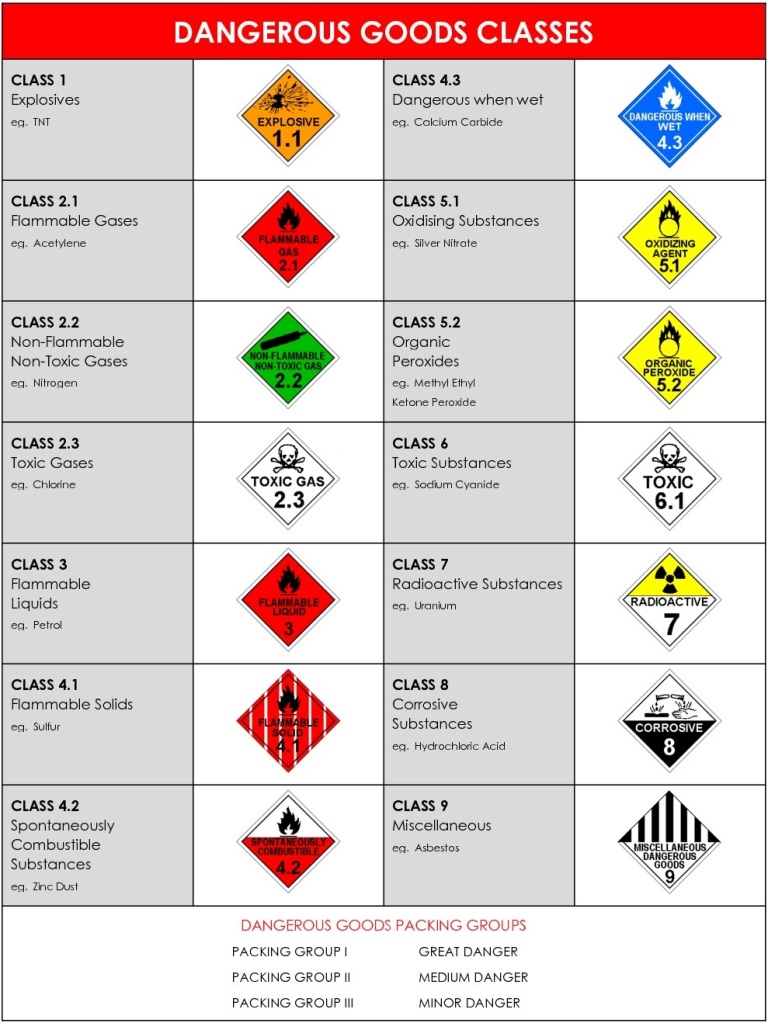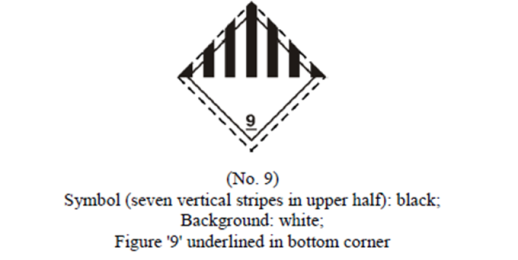CLASSES DIVISIONS PACKING GROUPS DEFINITIONS. Is a highly flammable liquid that is also toxic.

Classes Dangerous Goods International
The subsidiary class is the other class that further identifies the hazards of the dangerous goods.

Dangerous goods classification meaning. Dangerous goods shipments also require a dangerous goods transport document prepared by the shipper. The consignees name and address. Regarding the substances in the classification of dangerous goods in various countries although the regulations of each country are different they are usually the following 9 class of dangerous goods.
17082015 Dangerous goods also referred to as Hazardous Cargo means the substances materials and articles that are covered by the IMDG Code and is cargo that is considered to be hazardous because of its flammable corrosive poisonous nature or other properties. This means that all dangerous. As its flammability is its primary hazard Methanol is assigned to Class 3.
Classifications implemented in GB by the CHIP regulations and to the GHS system of classification. More than one subsidiary class is possible. The primary class is the class of dangerous goods that takes precedence over any other class.
There are links to the supply. 28012021 A dangerous good also known as hazardous material or hazmat is any substance or material that is capable of posing an unreasonable risk to health safety and property when transported in commerce. Dangerous goods are substances that are corrosive flammable combustible explosive oxidising or water-reactive or have other hazardous properties.
Dangerous goods can cause explosions or fires serious injury death and large-scale damage. Descriptions of each of the dangerous goods along with their quantity classification and packaging. Classification means for dangerous goods as applicable the shipping name the primary class the compatibility group the subsidiary class the UN number the packing group and the infectious substance category.
Miscellaneous dangerous substances and articles including environmentally hazardous substances. International Civil Aviation Organization WORKING PAPER DGP-WG09-WP5 9309. Class 1 explosives Class 2 compressed gas and liquefied gas Class 3 flammable liquid.
Identifying dangerous goods is the first step to reduce the risks posed by the product with proper packaging communication handling and stowage. CLASSIFICATION OF DANGEROUS GOODS. 07012016 Some dangerous goods have multiple hazards.
And emergency contact. 09102018 Hazardous substances are classified on the basis of their potential health effects whether acute immediate or chronic long-term. Dangerous goods are classified on the basis of immediate physical or chemical effects such as fire explosion corrosion and poisoning.
It is also shown in the Australian Dangerous Goods Code as having a. 28062021 Classification is defined in Part 1 of the TDG Regulations as. For most of dangerous goods the primary class and subsidary class can be found in.
This document is a general overview of the TDG classification. The Dangerous Goods Act 1985 DG Act defines which substances are dangerous goods. The information that is generally required includes the shippers name and address.
See ADR at 2138 and 229110. It meets the classification criteria for both Class 3 and Division 61.

A Classification Of Dangerous Goods Hazardous Materials

Transport Of Dangerous Goods In Depth Croner I
What Is A Placard Load For Dangerous Goods Transport

Class 1 Dangerous Goods Explosive Substances And Articles

Transport Of Dangerous Goods In Depth Croner I

What Are The Classification Of Dangerous Goods As Per Imdg Code Marinegyaan

Dangerous Goods Classes And Symbols

Hazardous Cargo Freight And Global Transport

Class 9 Dangerous Goods Miscellaneous Dangerous Goods

0 comments:
Post a Comment